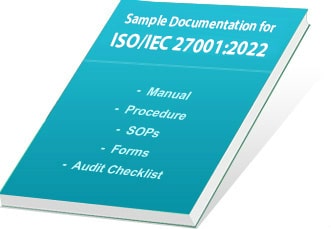
ISO 27001 is a wide-ranging international standard for information security management systems. Every organization wants to achieve the ISO 27001 Certification, to gain benefits of information security management system implementation. To understand and evaluate the developed management system for information security is effective or not? So, a regular Internal Audit plays a very important role here to ensure conformity to the standard. Compliance with ISO 27001 requires constant monitoring and systematic evaluations of developed ISMS. A perfect internal audit must be operative planning, clear and brief documentation, and complete knowledge of the standard can improve the probabilities of audit success. The ISO 27001 internal auditor training can help to understand the ISO 27001 internal audit process and helps to get confidence. The whole ISO 27001 internal audit parted into five major parts; each part is described in the detail are as follows:
- Understand the scope and the risk assessment: Firstly, determine the scope of the internal audit. This means the focus on identifying which areas are on the higher priority that needs to be audited more often and lower priority that needs to be less frequent. This is termed a risk assessment. It is required to conduct a risk-based assessment to determine the areas of higher risk for the audit. It is also important that the organization’s audit scope is configured with the ISMS policy. Once the internal auditor identified areas in processes that fall within the scope of the internal audit, the internal auditor needs to prioritize the resources and prepare for the audit.
- Documentation Review: After completing determining the scope of the audit and accompanying the necessary risk assessment, then should start reviewing the documents of the organization relating to the administrative and business operations that are in place. The ISO/IEC 27001 Documents reviewed at this stage of the audit would be relating to the scope of the management system, policies, procedures, and processes, documents required by the standard, and other necessary documents deemed necessary by the organizations for successfully maintaining the management system. Also, the documentation review helps authenticate whether the established documents are in placement with the requirements of the standard.
- On-site Audit: Once the audit scope is well-defined and the documents are systematically reviewed the next phase would include performing an on-site audit to gather the evidence and identify gaps in the management systems and processes. The evidence-gathering process includes interviewing employees, managers, and other investors who are connected with the ISMS. The onsite audit determines if an organization has met the minimum requirements of the standard and is ready for the ISO 27001 certification audit. An onsite audit includes witnessing the established practices in the organization, interviewing staff, and verifying processes and their effectiveness. Also, all records are reviewed, evidence is collected, and a full audit report is created describing the gaps identified, areas of nonconformity, and possible improvements in the management system.
- Evidence Analysis: Once the onsite audit is complete, the decided evidence collected is studied and sorted to classify the risks identified during the audit process. The audit analysis helps detect gaps against the base principles and requirements of ISO 27001 Standard. The auditor compiles these results, discloses the gaps in enforcement, and may further identify areas of ISMS that necessitate additional testing.
- Audit Reporting: After completing all the steps, then it’s turn for the audit reporting, which is the final stage of the assessment process. Here the auditor presents the results of their audit. The internal audit report should be a detailed document comprising the scope, objective, high-level analysis, and key discovery. The report will also include approvals and corrective actions needed. The audit report should be presented and discussed with management for further plans.



